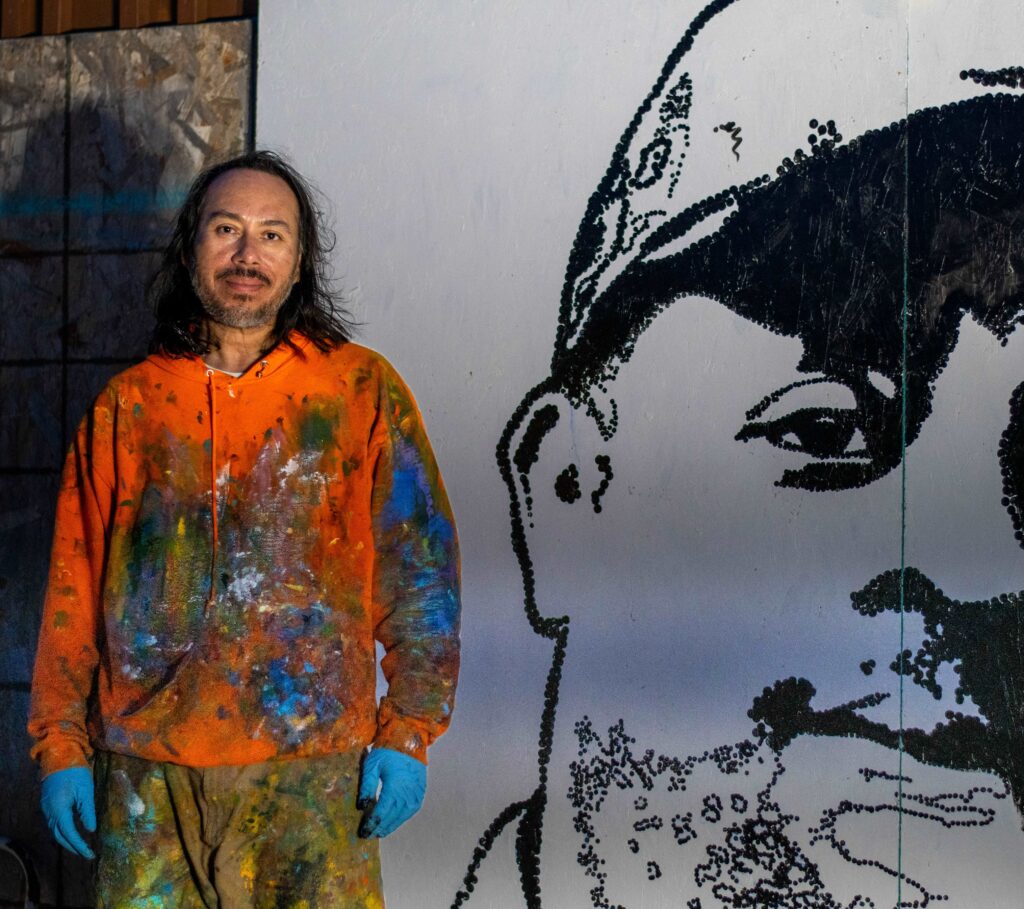First Person Plural: Honoring Immigrant Stories in White Bear Lake
You might see new—even familiar faces on the grounds of White Bear Center for the Arts. In the form of huge black and white mural portraits, local artist and White Bear Lake resident Cadex Herrera’s latest project, “First Person Plural,” shares the journeys of immigrants who now call White Bear Lake home.
Through in-depth conversations and interviews with ten immigrant community members, Cadex has created a powerful two-part project: a documentary that serves as a vital record, telling their stories and ways they’ve enriched their communities; and a series of murals that bring their faces to the public eye.
First Person Plural refers to the collective pronouns, “we,” “us,” and “our.” In this project, Cadex zeroes in on the pronoun “We,” the first word in the Constitution of the United States. Embracing “We” Cadex moves beyond the individual to emphasize community and togetherness while weaving individual stories into a collective narrative that instead celebrates unity and belonging.
“We immigrants are the invisible force that makes this country work,” Cadex notes. “These murals are meant to make them visible.” One of the stories Cadex hopes to tell is that of Peter Atakpu, a lifelong educator who moved to the United States from Nigeria at a young age. He served as principal at the St. Paul public school district for many years and is now the Director and owner of the Mathnasium of White Bear Lake.
For many years, Peter and his wife have cultivated an impressive business, embodying the spirit of resilience and growth that exists in all of Cadex’s subjects. In conversation with Cadex, he shared his journey that began when he arrived in Minnesota over 40 years ago. Knowing limited English and speaking with a thick accent, he recalled people underestimating him because of his accent, and being perceived as less intelligent. With a Bachelor of Science in Mathematics, two Master of Arts degrees—one in Educational Leadership and another in Literacy Education—and a Doctor of Philosophy in Educational Leadership, he defies that narrative. And now uses his experience to help struggling students understand and excel in Math.
Other such stories include Ben Byaruhanga, who came to Lino Lakes from Uganda, Julio Cabrera a first responder from El Salvador, and seven others from all over the world. To find them, Cadex collaborated with local organizations, Many Faces, the White Bear Lake School District, White Bear Center for the Arts, and the Rotary Club of White Bear Lake to connect him with folks willing to tell their stories.
While the project has been underway for over a year, it proved a struggle for Cadex to find ten people. “They’re afraid,” he said. “People are hesitant because of the current political situation.” The timing of “First Person Plural” and its first installation are no coincidence.

As an immigrant himself, moving from Belize to the United States to pursue art when he was 19 years old, Cadex knows what it’s like to feel other. “I remember walking into different spaces, the grocery store, or the library and realizing that I was different.” He says. “I didn’t want to be seen, and it took me a long time to say, It’s okay for me to be in these spaces.” That’s what he hopes to accomplish with this installation, for immigrants to feel seen and welcomed.
Faces are made up of dots like those of a demographic map, representing the idea of numbers, statistics, and mobility. Inspired by photographs taken by Cadex, shot at a lower angle with the subject facing the viewer, each image is imbued with dignity as if to say “Look at me–I am here, look me in the eye.”
You can see “First Person Plural” at White Bear Center for the Arts starting October 24, 2024 on view through May 2025.
This is a Many Faces event hosted by White Bear Center for the Arts. This This work is funded in part by the Minnesota Humanities Center with money from the Arts and Cultural Heritage Fund.
